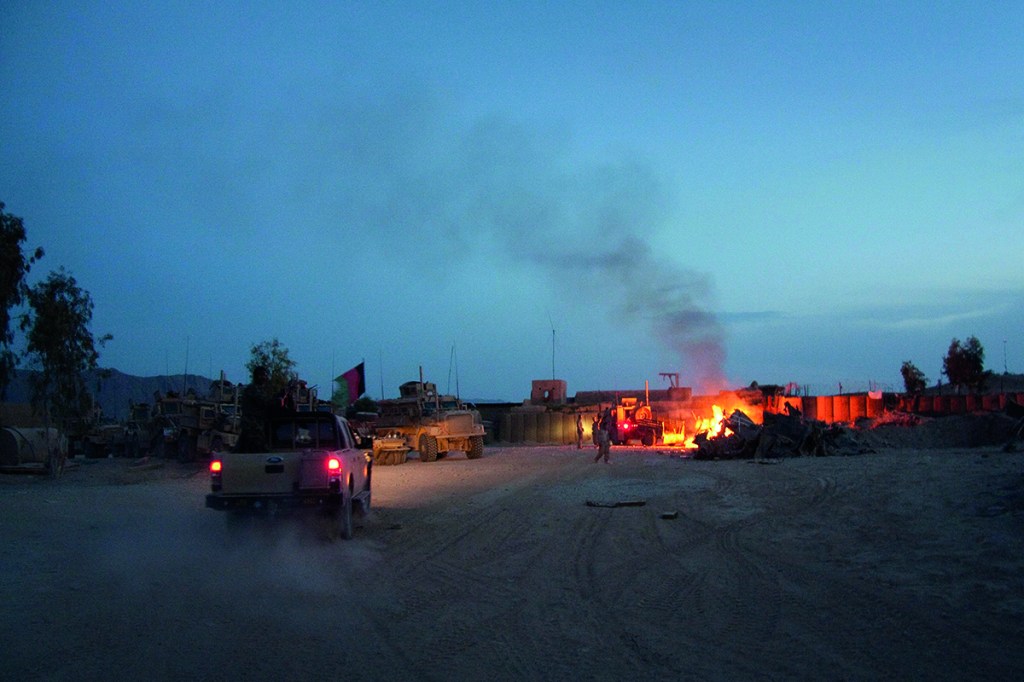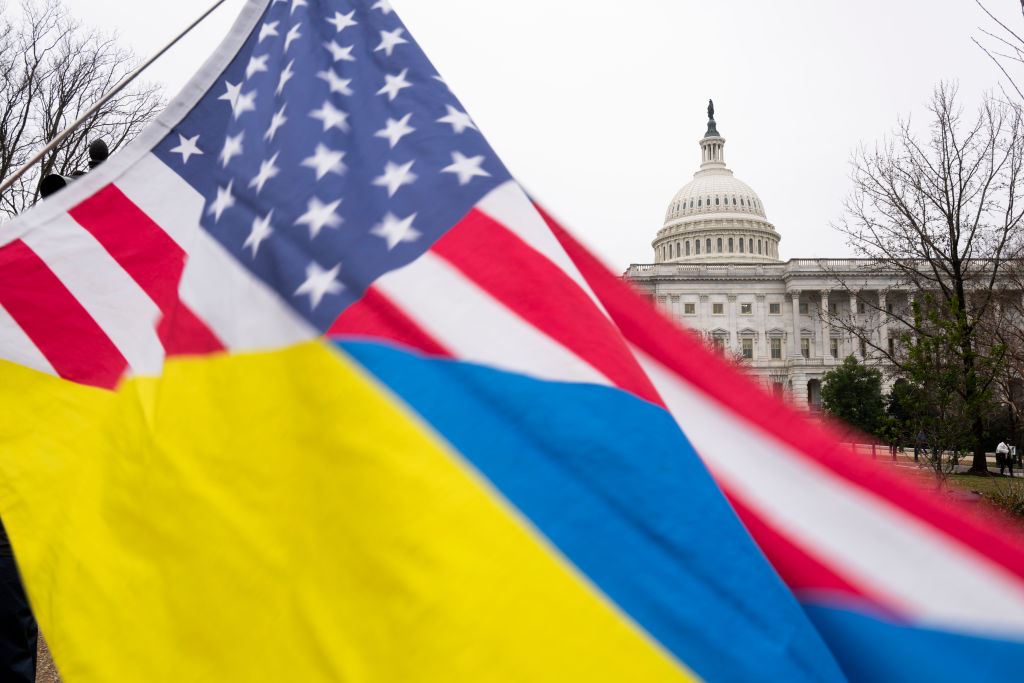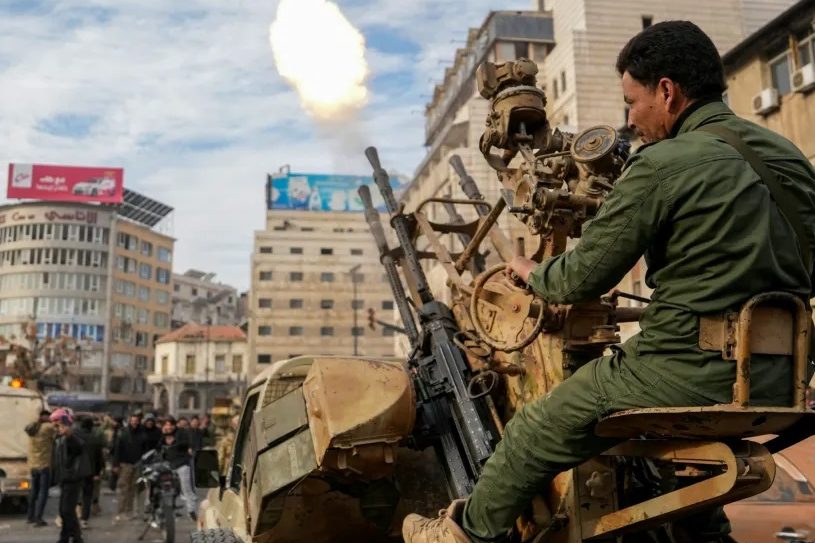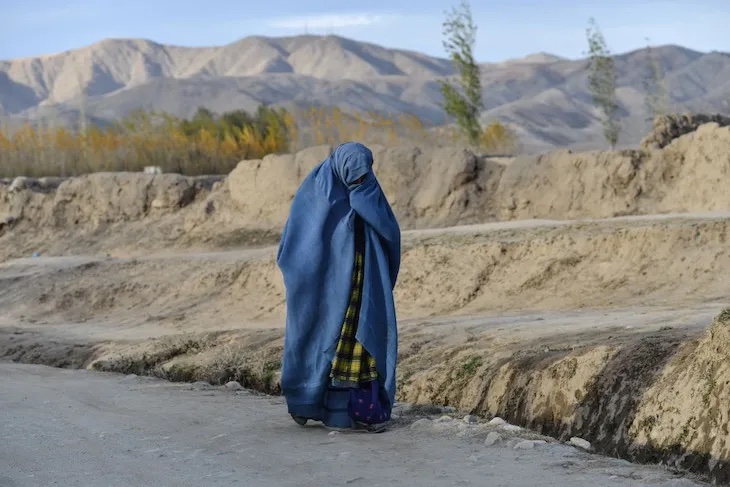In June 2020, while COVID raged and cities rioted, my older brother Pat was promoted to major in the Marine Corps and diagnosed with thyroid cancer.
I went down to the base at Quantico, Virginia on a Monday to see Captain-now-Major Pat get ceremonially ‘pinned on’ with the golden oak leaf before a formation of Marines. On Wednesday, Pat ran eight consecutive six-minute miles and went in for minor surgery to remove a suspicious growth on his thyroid. I’d packed my bags for a week to help out with my two- and four-year-old nephews while my sister-in-law drove back and forth to Walter Reed.
My nephews make it easy on the babysitter: what they like most to do is watch the opening credits of Pat’s favorite movie, the 1986 hockey flick Youngblood, in which Rob Lowe sinks slapshots in a dark, smoky ice rink to a soundtrack of heavy synths. Usually they’re only allowed to watch this once daily, before bed, as a treat, but on that Wednesday we watched it over and over while the texts came in from my sister-in-law. Potential complication…another hour…another hour…moving to the ICU…spending the night.
Pat’s doctors had discovered during surgery that the cancer wasn’t the small spot they’d thought it was. It had spread to his lymph nodes and possibly into his bloodstream. This necessitated the removal of his entire thyroid, and a course of radiation as soon as possible.
Pat is blessed with a sunny disposition. He was known as ‘Mr Awesome’ among the Marines he commanded as a lieutenant. Upon his promotion to captain they presented him with a plaque engraved with an unmistakable Pat-ism: ‘I just want to do awesome things!’ By the time Pat got home from the hospital, with a bag of Chick-Fil-A in his hand and a drain in his neck, he was already bragging about the next awesome thing he would do: survive cancer. This turned out to involve grueling months in which radioactive iodine treatment forced him to isolate from his family and threw his future into uncertainty.
Hang on, though: thyroid cancer? Not only does this not run in our family, do young men even get it? The answer is, not often; women are three times more likely than men to be diagnosed, and men are most at risk in their sixties and seventies. Pat was 33. Pat’s doctors were able to determine that the type of cancer he had — papillary — could only be contracted through the environment, from exposure to radiation. But where would Pat have been exposed to radiation? That’s when I first heard about the burn pits.
Burn pits are basically what they sound like: huge open holes in the ground, sometimes several acres wide, which burn waste from Forward Operating Bases (FOBs), mostly in the Middle East. Materials thrown into the burn pits include plastics, metals, rubber, chemicals, munitions and medical and human waste. Debris and toxins from the pits can permeate the FOBs, potentially exposing even soldiers whose stations aren’t in the immediate vicinity of a pit. Exposure is linked to liver, kidney and respiratory disease, neurological conditions and cancer.
There was an active burn pit where my brother served a deployment at Camp Dwyer in southern Helmand Province, Afghanistan, in 2012. He was aware of its existence, but he wasn’t conscious of breathing in fumes, and his doctors don’t know whether his being there gave him the exposure that led to his cancer.
Even for those with direct and prolonged contact with the pits, establishing a link between exposure and disease is notoriously tricky. The Department of Veterans Affairs reports that it has rejected more than 70 percent of disability claims related to burn pits between 2007 and 2020, largely because of the difficulty of proving a direct connection between a veteran’s disease and his or her service. Pat doesn’t need a medical link to receive care; as an active duty Marine, his treatment is covered no matter what. For many veterans, though, the near-impossibility of finding a definitive connection between their ailments and a burn pit prevents them from qualifying for medical help.
In 2020, the Toxic Exposure in the American Military (TEAM) Act was introduced in both chambers of Congress to address this issue. This bill would have granted ‘presumptive’ status to disability claims related to burn pits, meaning that veterans could begin receiving compensation and care while their claims are adjudicated. It would also fast-track the addition of new diseases to presumptive status; hypothyroidism is among the conditions currently being studied.
Ironically, since the point of the legislation was to speed up healthcare provision, the TEAM Act was never voted on by the 116th Congress and now awaits reintroduction in the 117th. If the experience of Vietnam veterans is any indication, the veterans of the post-9/11 wars can expect to keep waiting. Forty-five years after the end of the Vietnam War, vets are still fighting with the federal government for recognition and treatment of conditions related to the toxic herbicide Agent Orange.
What’s going on here? Every politician Supports the Troops, yet there seems to be little legislative progress around these issues.
One answer may be that many Americans, like me before Pat’s diagnosis, have no idea this is going on. When I started looking into the burn pits, I was shocked at the sheer volume of information available. But these resources are concentrated within the military community. The Military Times and Stars and Stripes cover burn pits heavily, and so do nonprofits devoted to veterans issues and advocacy, like Burn Pits 360 and VetsHQ. But I wouldn’t have come across these resources until last year, when I started looking.
If the media treats military issues as niche, it’s because they are. The military constitutes less than one-half of one percent of the US population, and they’re demographically concentrated. The Council on Foreign Relations reports that 42 percent of military recruits come from just six states — Florida, Texas, North Carolina, Georgia, New York and California — and the majority are from households making less than $87,000 annually. Compare these demographics to those of the 117th Congress, which has the lowest total of veterans serving in any session since World War Two, and in which more than 250 members are estimated to be millionaires. Talk about a civilian-military divide.
Though government officials are largely insulated from this concern, one possible exception is President Biden himself. The President has suggested his son Beau’s death from brain cancer at age 46 may have been related to burn-pit exposure during his service in Iraq. It remains to be seen whether this personal connection in the Oval Office moves burn-pit legislation forward.
Policy amateur that I am, I don’t know what would fix this problem. I can’t help but think, reading about the harrowing, years-long battles some veterans fight with their own VA, that this parsimonious approach to the provision of healthcare is a farce. When sick veterans ask for treatment, we ask for paperwork. As one of the taxpayers subsidizing VA benefits, I couldn’t care less whether we can prove a veteran’s chronic bronchitis came from a burn pit, or his hypertension came from Agent Orange. I would like him to be treated. Healthcare is expensive, but so was the war.
Otherwise, my policy suggestion might be simply not to do any more wars necessitating FOBs with huge toxic trash fires. I have two more brothers coming up in the Marine Corps, and one go-round with cancer was quite enough for me.
The news for Pat is good. His doctors caught the cancer early and treated it aggressively, and his latest labs show that he is well on his way to remission. After a long delay and a few reassignments, he and his family are moving to sunny Miramar, in San Diego, where Mr Awesome and the boys will surf, rollerblade and root for the Padres. A new life for Pat coincides with the beginning of a new Congress and presidential administration, who once again have a chance to act on the healthcare issues facing veterans. I hope they will.
This article was originally published in The Spectator’s April 2021 US edition.

























